Setting out to achieve her dream of working as a professional embroiderer in haute couture, Claire de Waard took up the chance to study abroad at the Royal School of Needlework, and an exciting world of embroidery opened up to her. The techniques and traditions grabbed her attention, and continue to do so today.
In her practice-based work, Claire dives deep into a process, be it straw embroidery, goldwork or stumpwork. She studies the technique and plays with it. She looks for ways to adapt it, often by introducing layers of contrast through her choice of materials, textures and colours.
Alongside her work creating wow-factor embroidery for fashion shows and private commissions, Claire’s technique studies have allowed her to develop her personal practice – grounded in tradition, but always pushing the boundaries of the process. And her insects, flora and abstract designs made using straw embroidery are the perfect example of this evolution and experimentation.
Challenging traditional techniques
Claire de Waard: Embroidery methods themselves are such a great source of inspiration. My imagination is always sparked by understanding each method, and then thinking about what I can do to challenge it. I can change the scale, use different colours, or try out different materials, always with the aim of retaining the essence or structure of the technique.
My practice is rooted in the strong belief that no technique is old-fashioned.
This approach was particularly relevant to me when practising whitework embroidery. There are so many styles and processes covered by this technique. My favourite methods play on the structure of the fabric itself, like drawn thread work, for instance.
I love straw embroidery, which is very similar to goldwork in its process. This technique was first used in the 17th century in Europe. For example, there are church garments in Switzerland which are exclusively embroidered from thread and straw, in lieu of goldwork. The straw is long-lived and retains its shine and quality amazingly well.
I find the materials themselves very poetic. The act of transforming something of minor value, like straw, into gold-like threads speaks loudly about the way we define luxury and beauty. Somewhere within all this there is also a story about the importance of cloth and wheat, and their relevance within anthropology, which I find really interesting.
I am not incredibly illustrative in my work. But understanding the method itself provides me with options for experimentation that can exist on their own, without me having to draw.
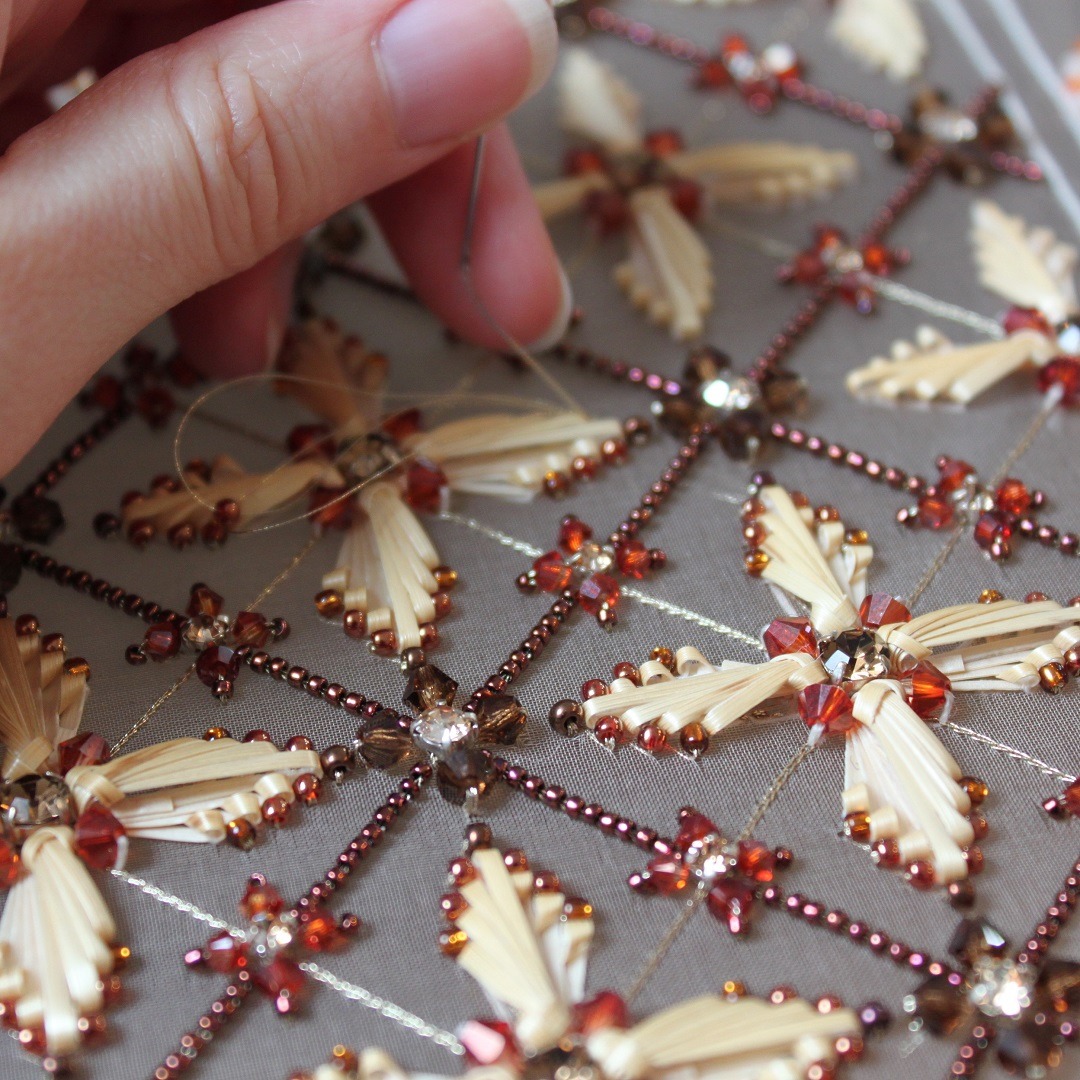
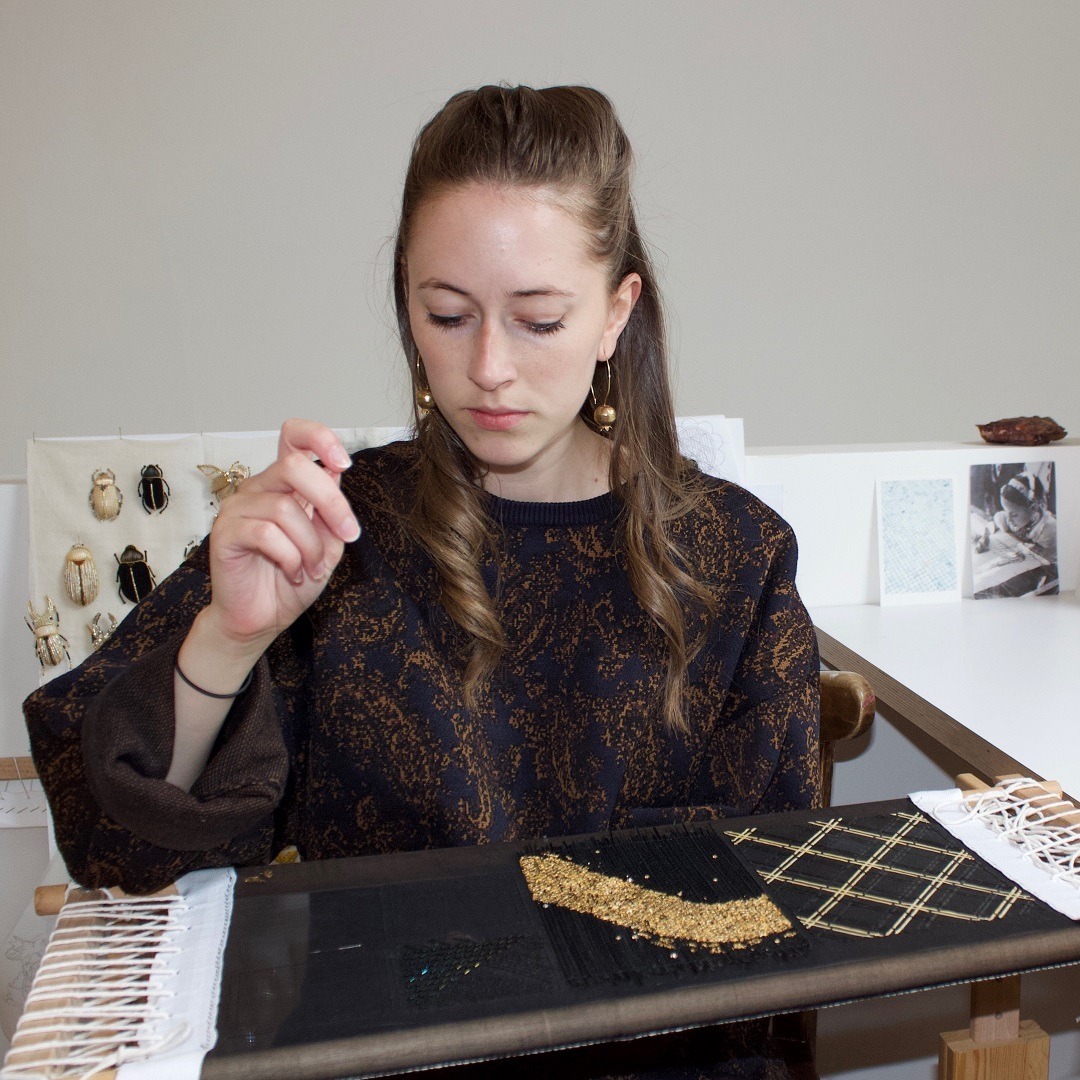
Straw and crystals
I use a lot of straw, or natural raffia, combined with small beads, such as those supplied by Japanese brands like Miyuki and Toho. The straw comes from a farm in Staffordshire, which I found through the Guild of Straw Craftsmen.
I’ve also inherited a taste for crystal beads (xilion beads, or sew-on crystals) from working in the fashion industry. I use them in moderation when I feel they are balanced by other textures. Sometimes, I make my own embellishing materials. I’ve experimented with metal patination techniques in the past, for instance.
A millefeuille of contrasts
My work is mostly practice-based, starting with studying a particular technique. There is a degree of intuition involved, replacing the traditional materials, or relying on found shapes. This leads me to a result that is more spontaneous and pleasing. The same goes for the colours. Sometimes a pop of colour can really lift the ensemble, other times it is more about proportions.
A key step for me is to assemble my materials before getting started, and play around texture and colours.
I used to watch a lot of cooking shows and often there would be an emphasis on providing contrasts: crispy and melting textures; acidic versus sweet flavours; or hot and cold temperatures. This idea has stayed in the back of my mind since. I like to compare my design process to creating a millefeuille, building different layers of contrast within the materials, textures and colours that I use.
Another constant behind my influences has been to look at foreign textiles, from Africa, Amazonia and parts of Asia, although I am no expert. I find the idea of transforming plants into textiles really fascinating. The learning curve associated with the excitement of exploring textiles is what drives me. There are simply so many crafts, styles and history to study – providing a lifetime of food for thought.
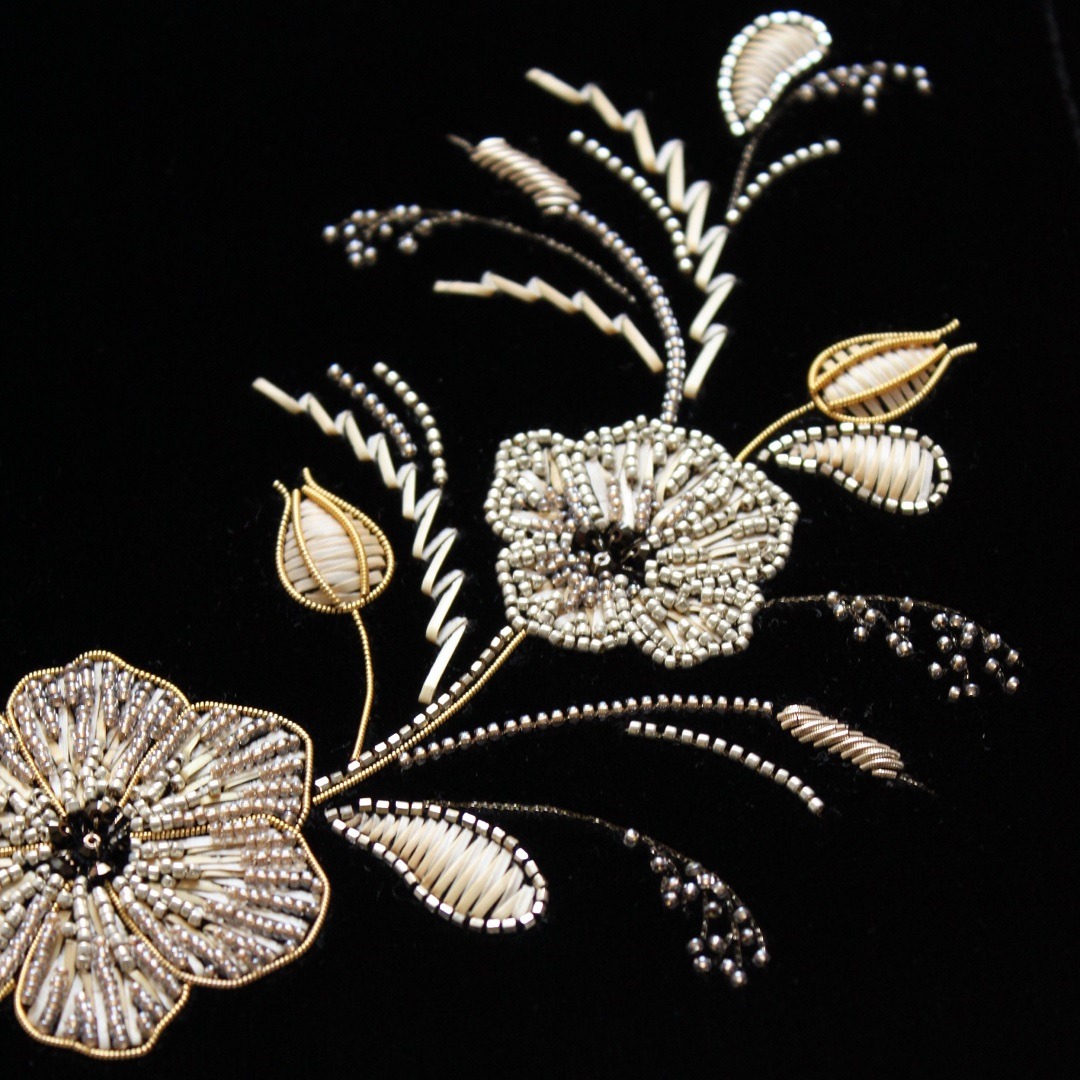
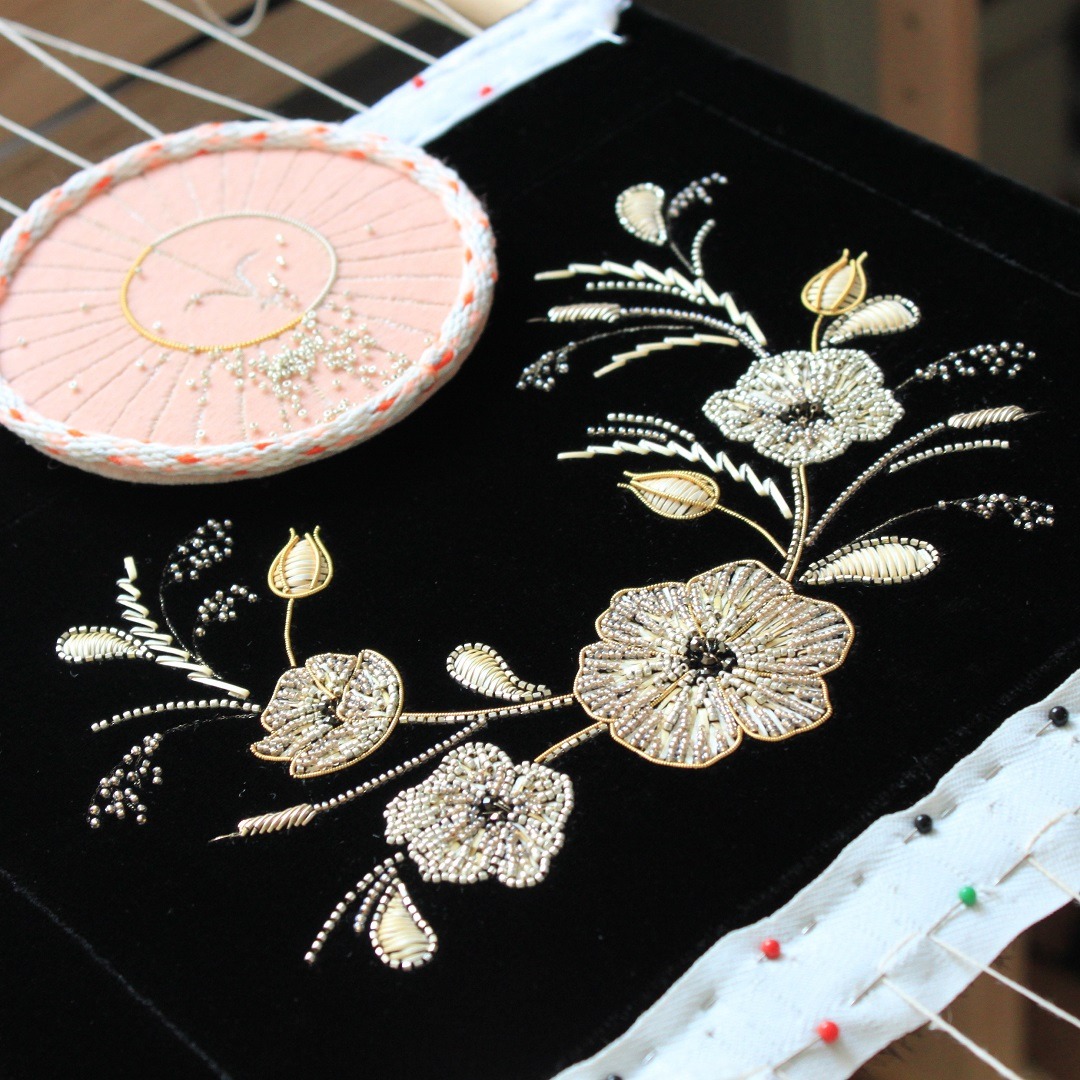
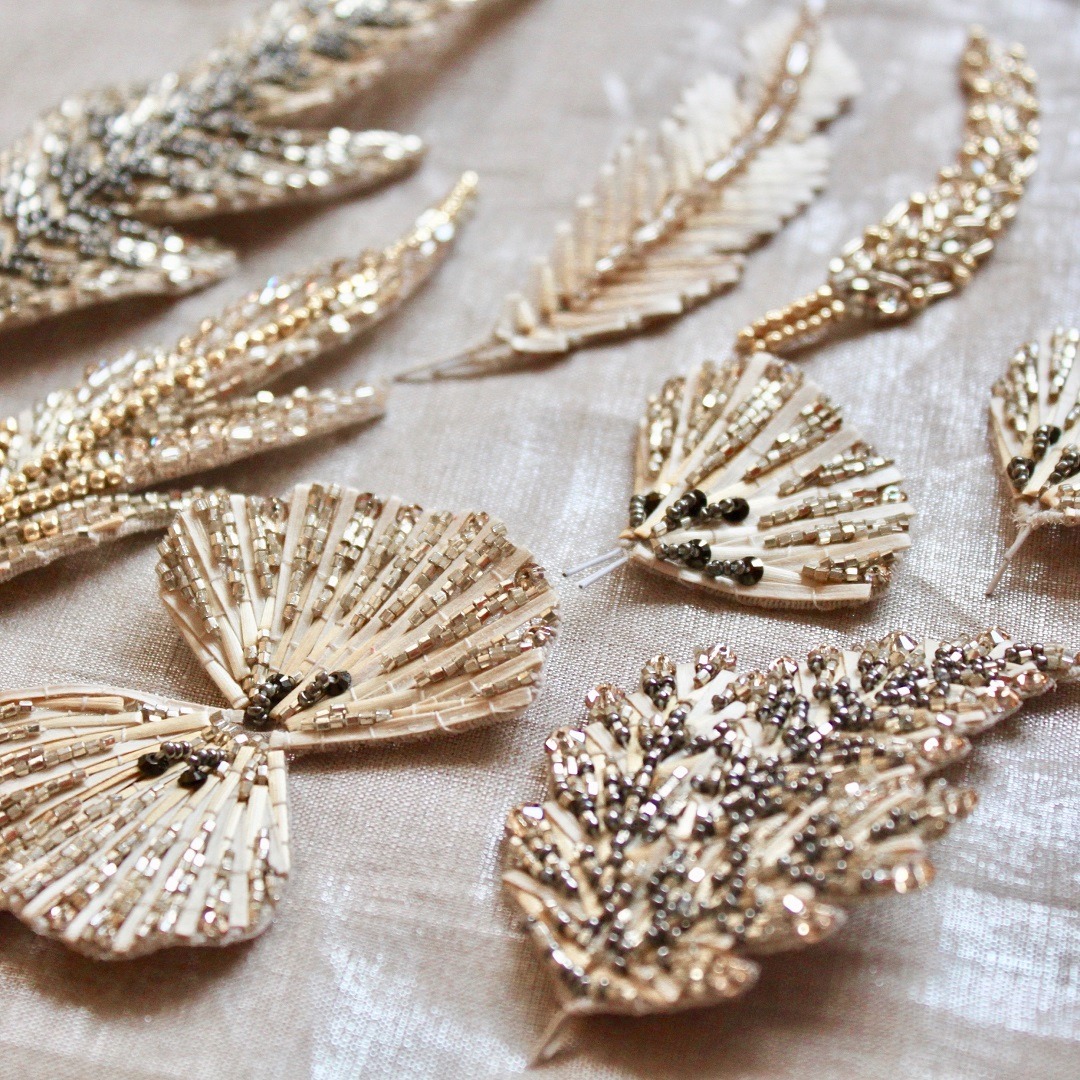
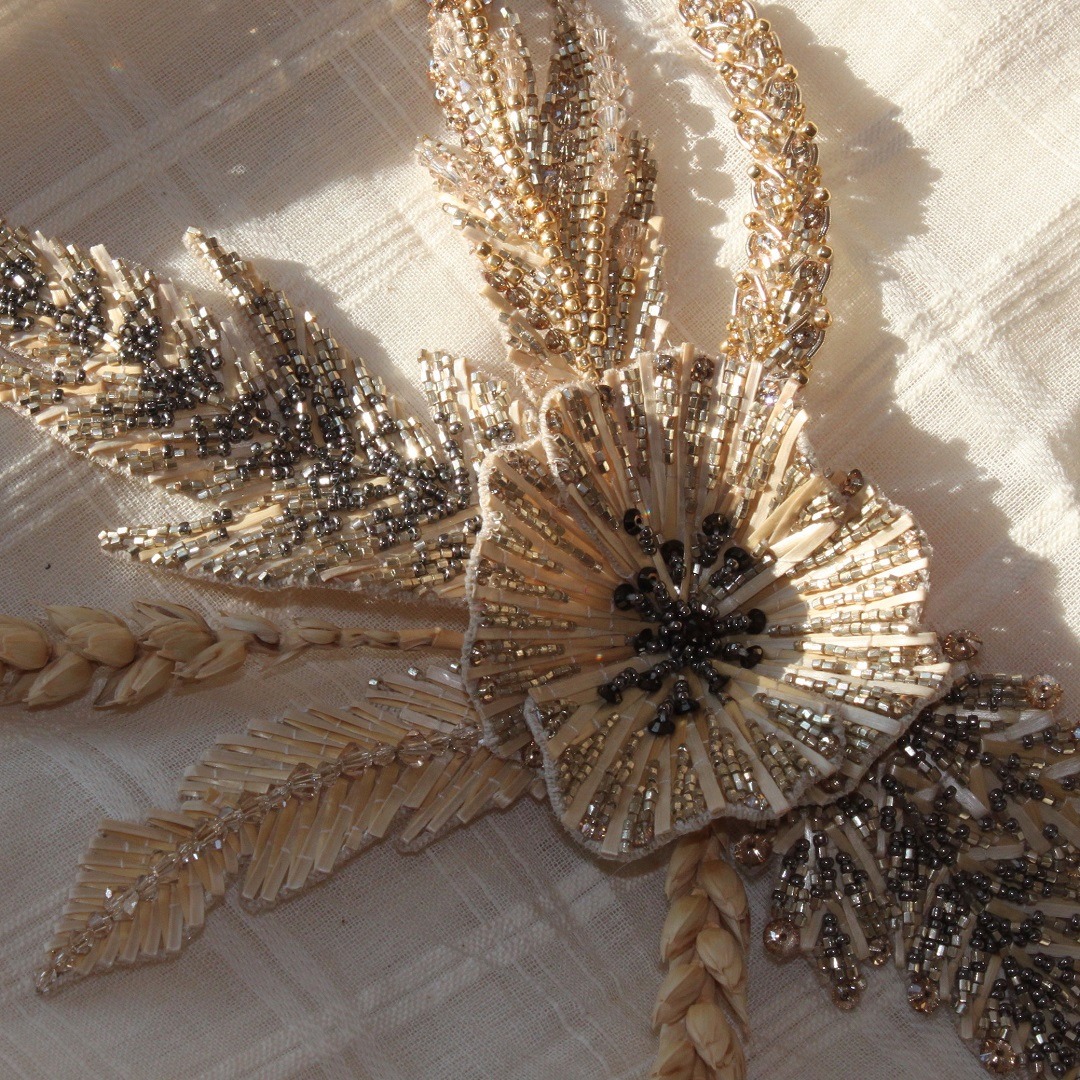
I was born in the US, to a Brazilian mother and a Dutch father, but I grew up in France. And to some extent I think this has influenced me in my choices and aesthetics. Embroidery is strongly associated with haute couture in France, and it’s through this prism that I first started appreciating the industry. But my approach is also one that I see as more grounded, with a love of natural, unrefined fibres, and modest items that deserve attention, like the objects depicted in some of the Dutch still life paintings.
As a teenager, I was interested in gaining textile skills. But I didn’t take up cross stitch until later, starting with a ‘simple’ project that took a year to finish. I very much loved the repetition and pace of it, and soon started to explore other stitches.
The craft industry is a big part of the economy in France, and very romanticised when it comes to the luxury market and its relation to haute couture. I fantasised about being a professional embroiderer, and taking a degree at the Royal School of Needlework offered me that possibility, as well as the chance to live abroad.
While my inspiration was driven by looking at the Métiers d’Arts collections, for instance, which were full of exquisite beading and feathers, the RSN opened up a new perspective on embroidery for me.
Since then I have worked for various fashion brands, where I help with the embroidery for seasonal shows and private commissions. And in 2020, I decided to place more focus on my personal practice; I’ve had great feedback, particularly on my work with straw, which pushes me to go further.
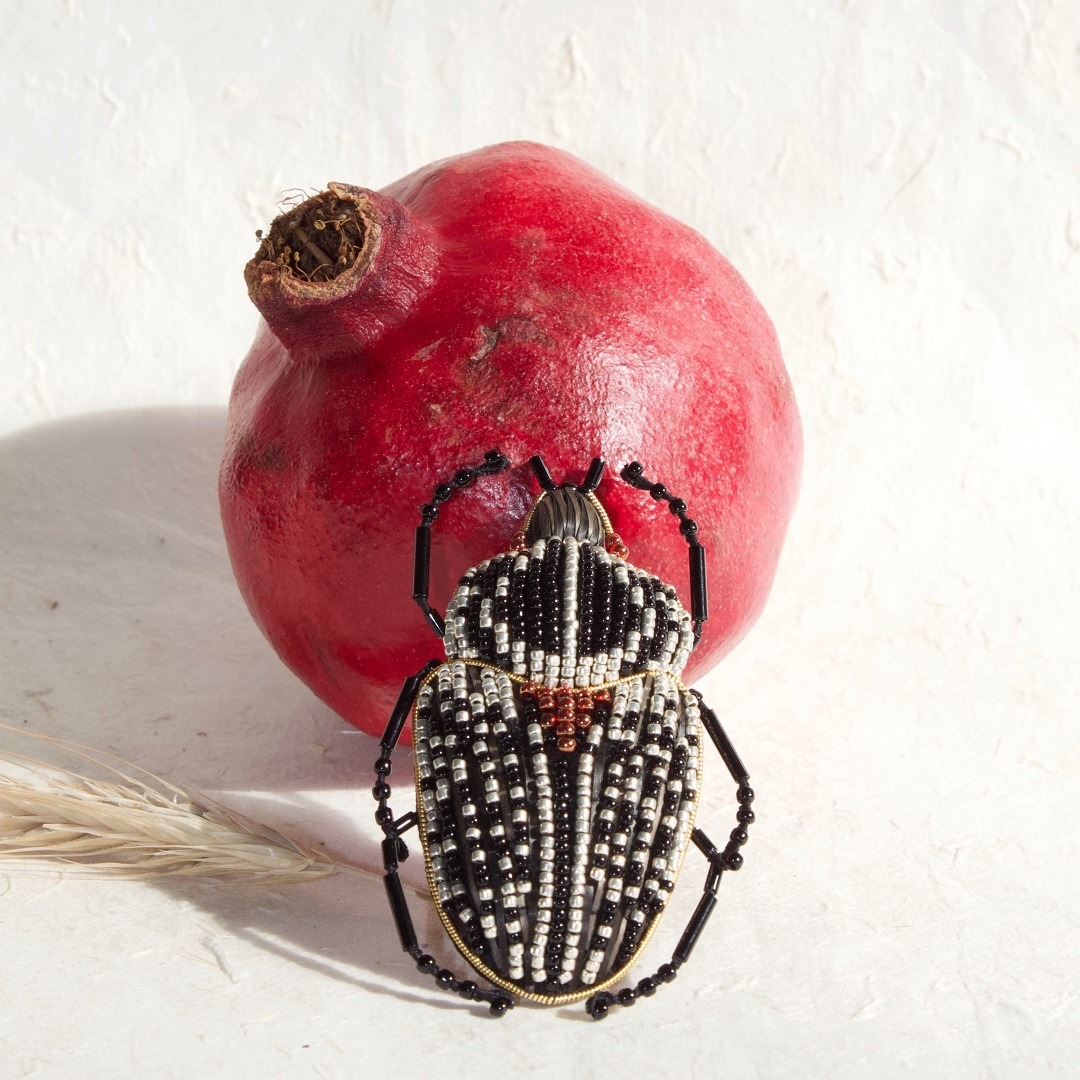
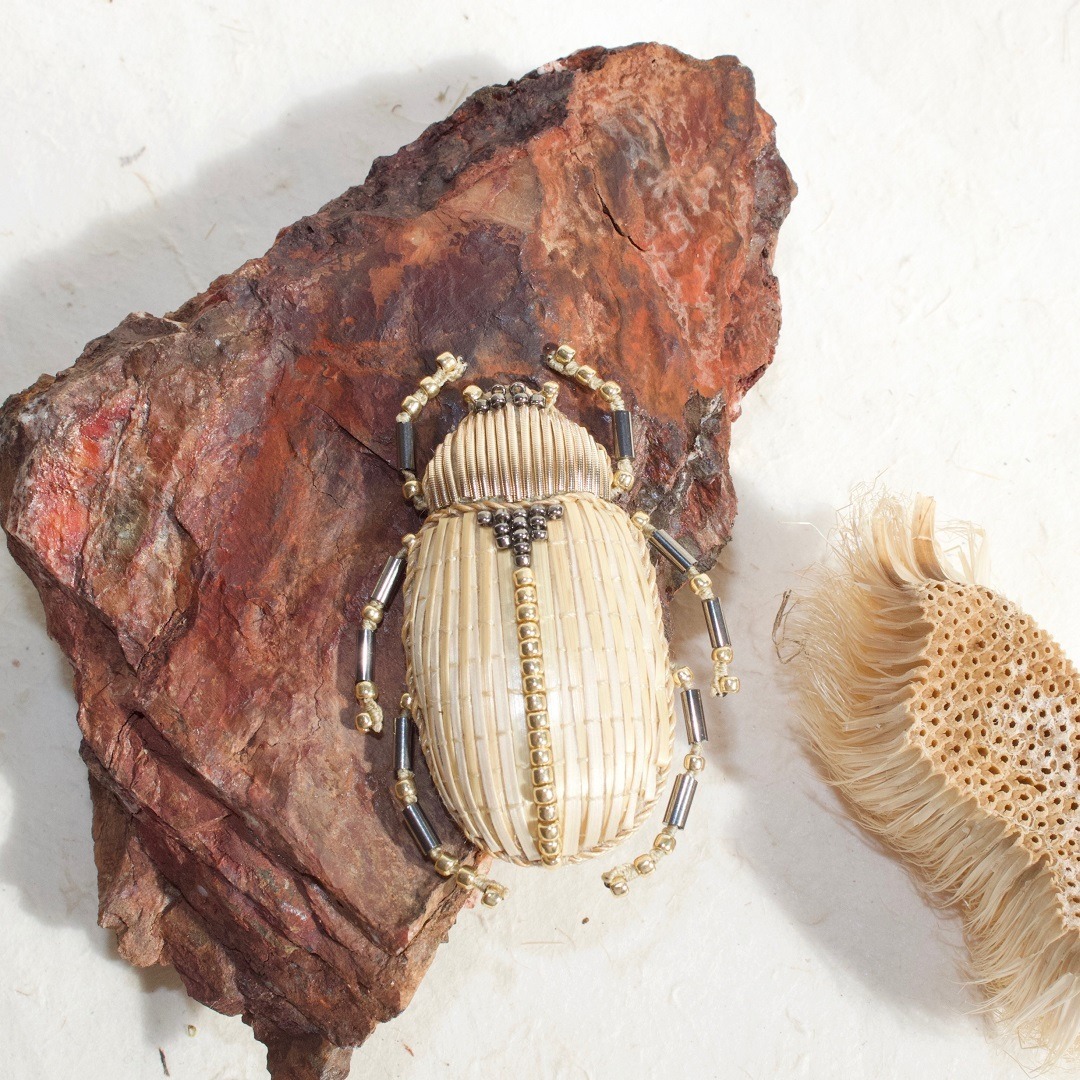
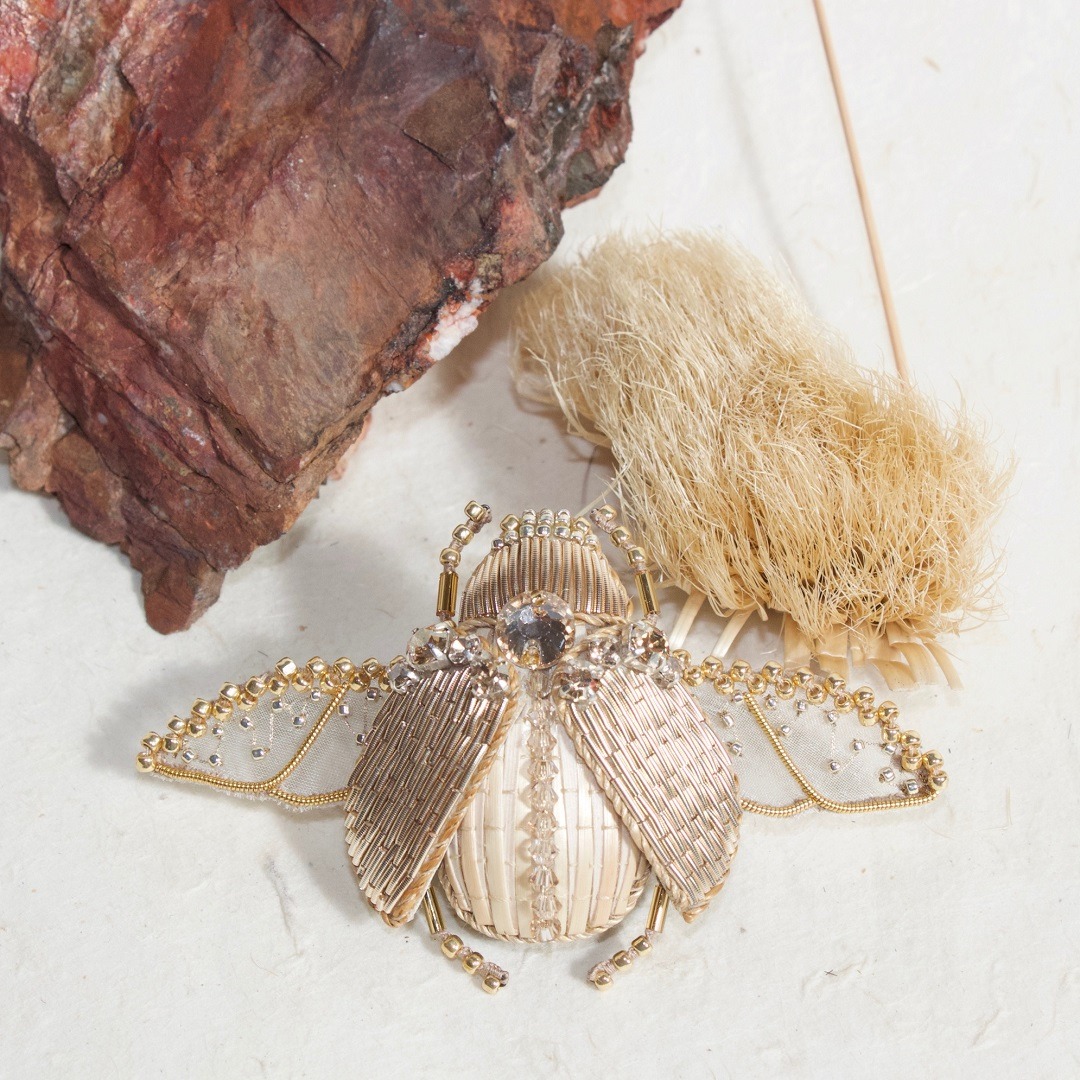
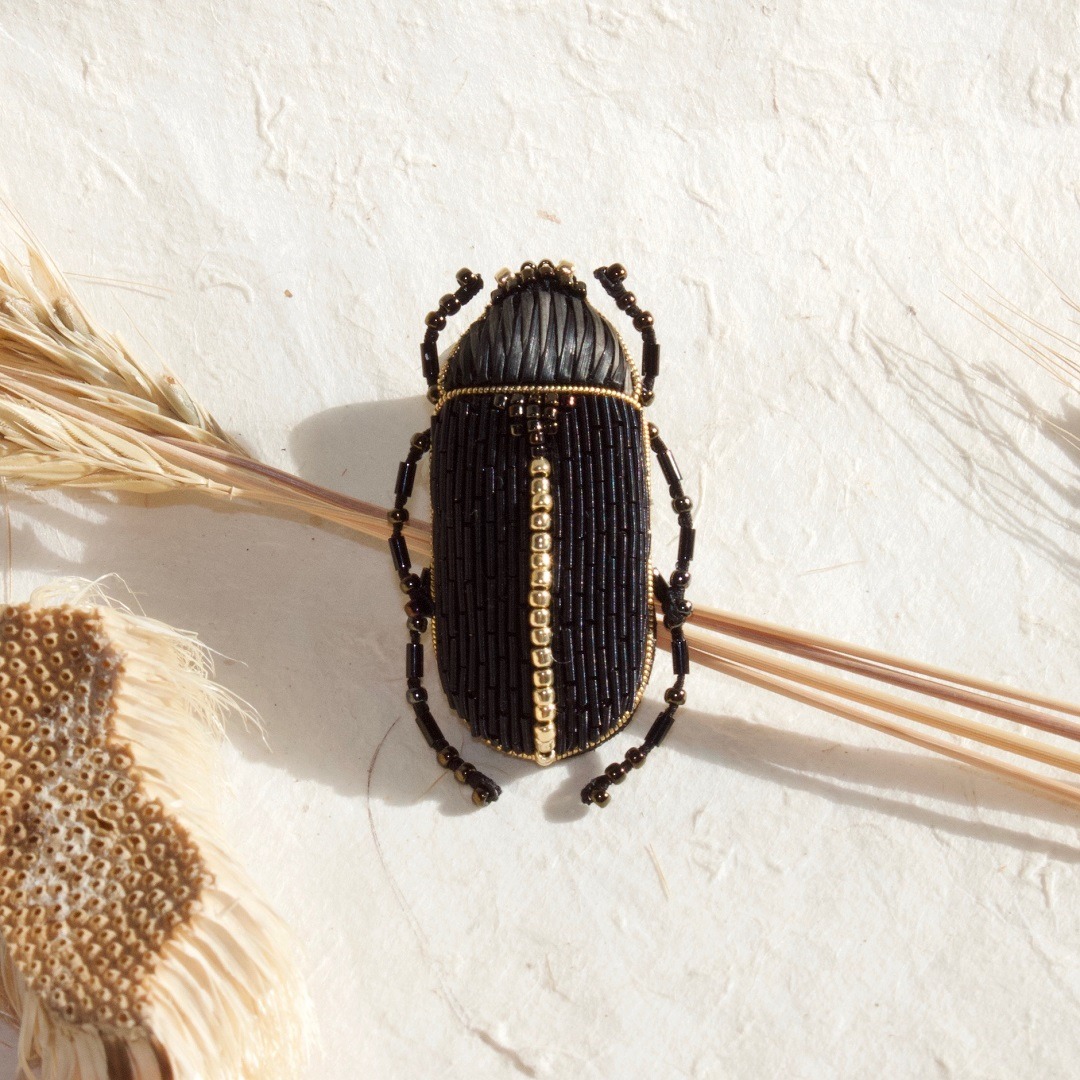
Experimental crafting
I don’t really draw unless I have to – I prefer to play around with the materials themselves. This approach allows me to study other craft practices and use them to develop my processes.
Each material has its own properties and therefore requires me to work a little differently. For example, with basketry you need to dampen the straw, like you would with woven willow. Further research led me to Japanese basketry techniques, and from there, exploring weaving patterns. Another straw craft I’ve studied is marquetry, with the added complications of dyeing. For each craft, my explorations lead me back to my own applications within the realm of embroidery.
My artwork practice has been strongly influenced by my embroidery work in haute couture, and fashion in general. Techniques, like beading, with strong visual impact, play an important part of my work. Although I aim to remain fairly modest, some of my work has inevitably featured that same ‘shiny’ element. I often find my work becomes more densely embellished than I first imagined.
A lot of my work is developed as samples, but these can be adapted as accessories or embellishments.
I also look to the interior industry for inspiration, in particular when it comes to straw marquetry and embroidery studios such as Montex. I’m quite excited at developing ideas based around the use of straw embroidery as a feature on bespoke furniture pieces.
My favourite work is Straw Harlequin. It is based on a previous sample with a similar structure, where small beads fit within the gaps left by the dents on the straw leaves. By dyeing some of the straw black and filling the gaps with more beading, a black and white diamond pattern was created. It was difficult to keep the straw shapes regular, for a uniform diamond pattern. Despite being intensive to make, it gave me a lot of satisfaction. It’s a very tactile piece that has its own movement and weight.
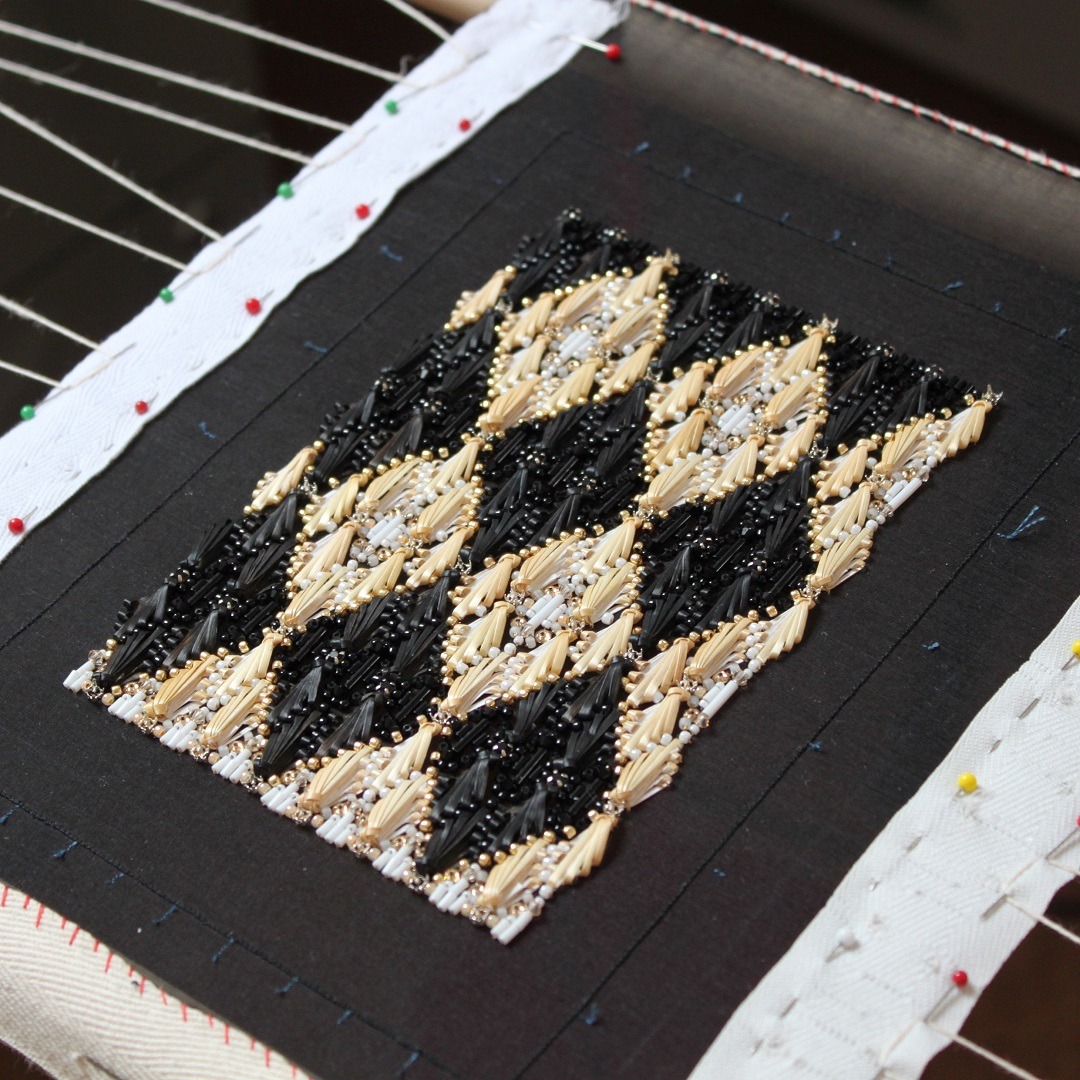
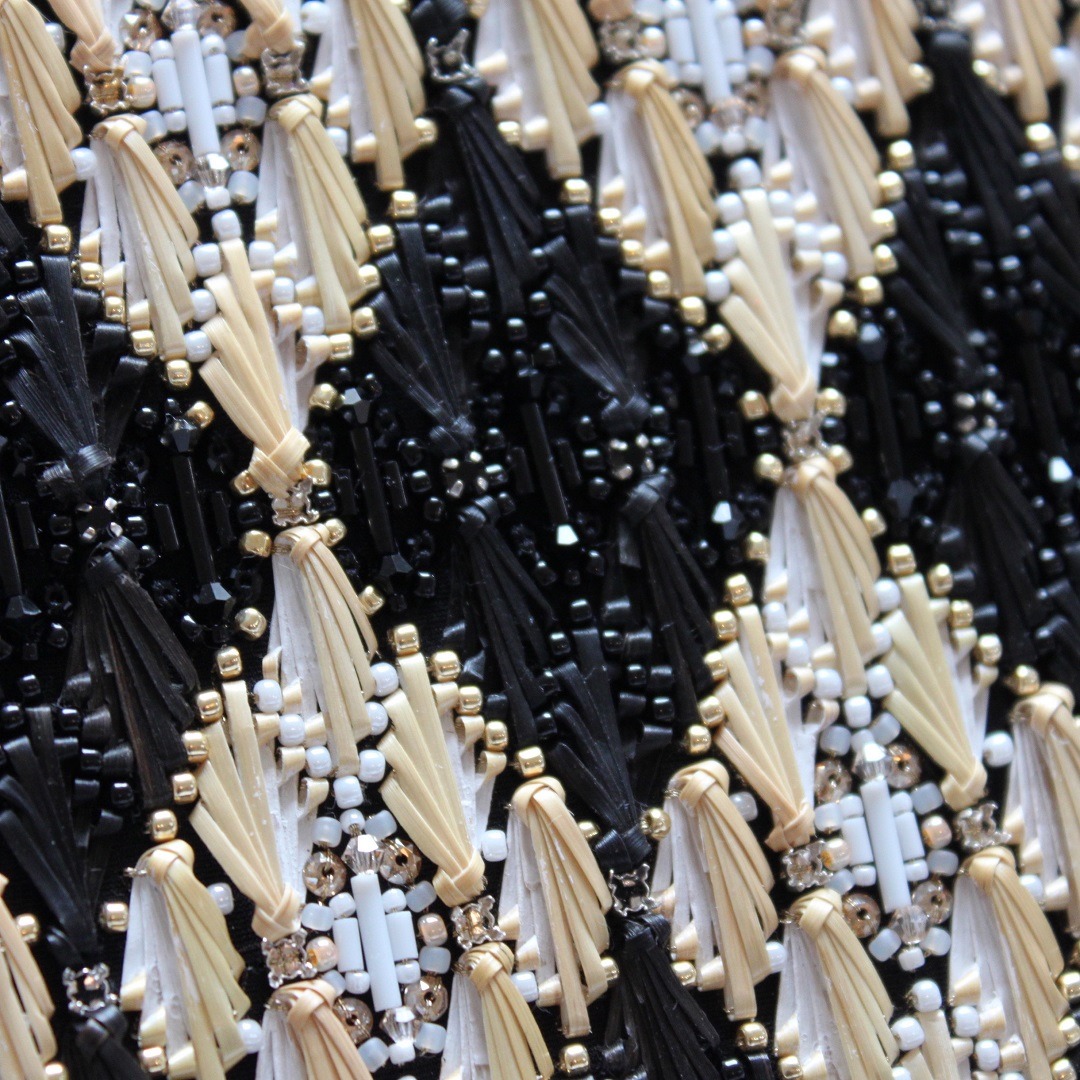
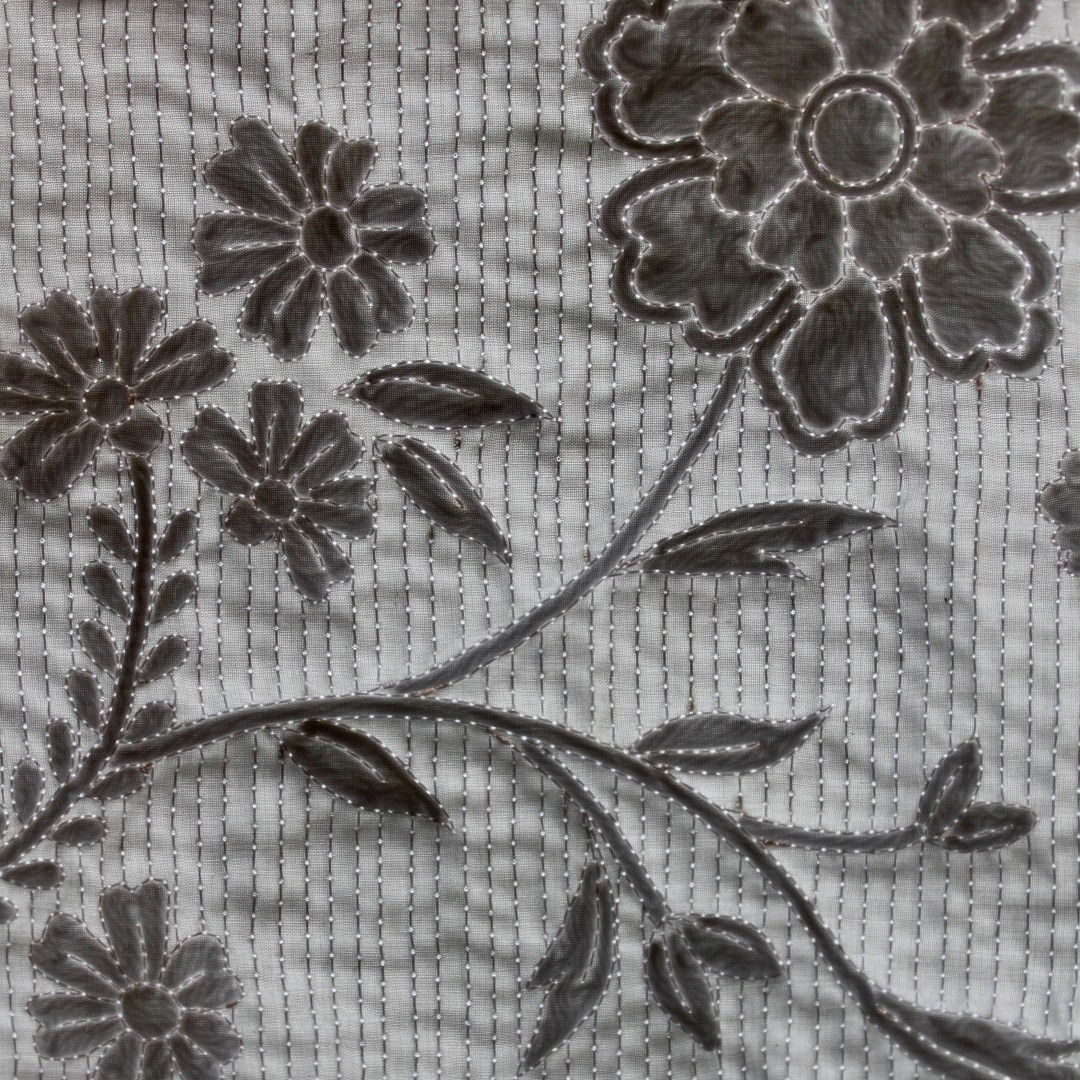
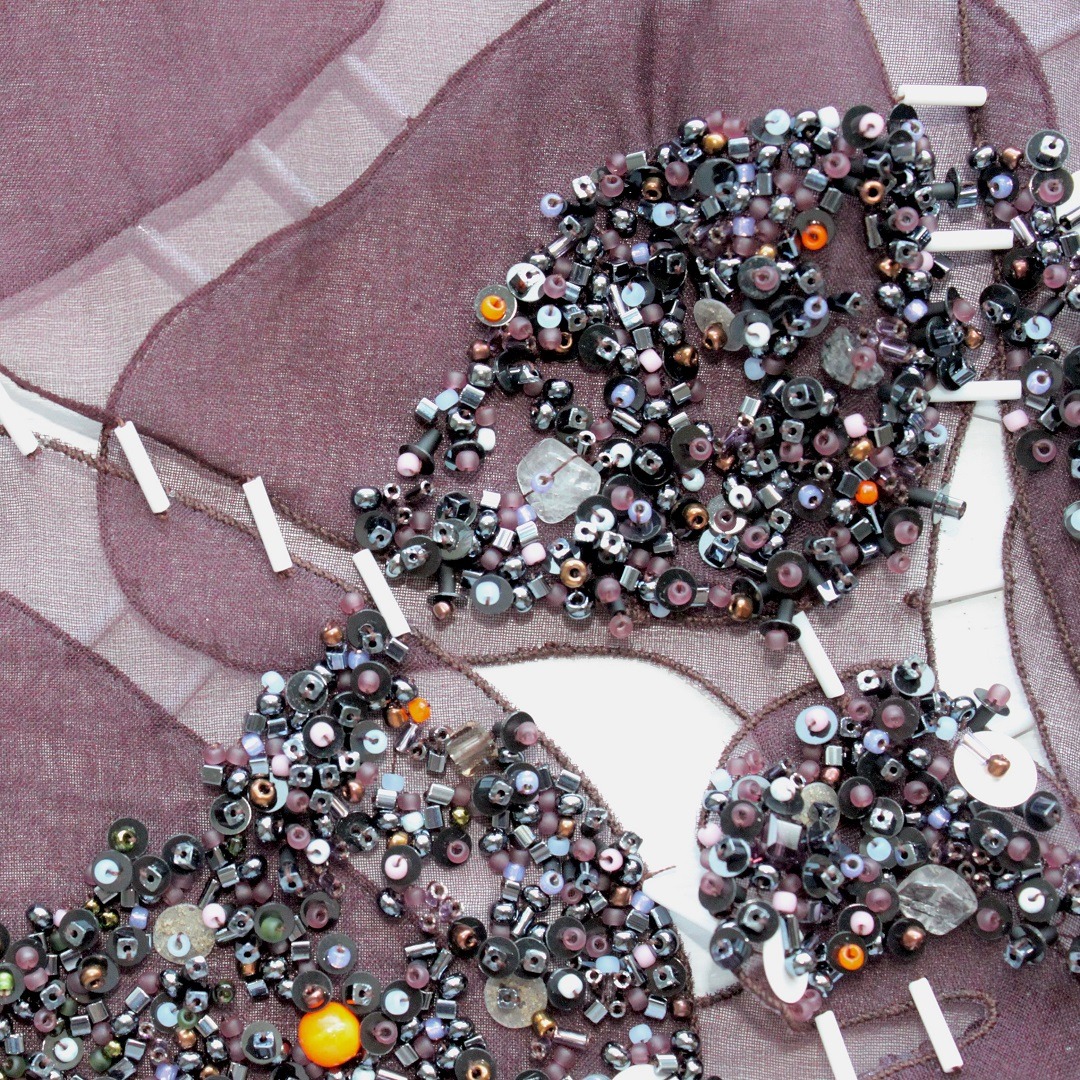
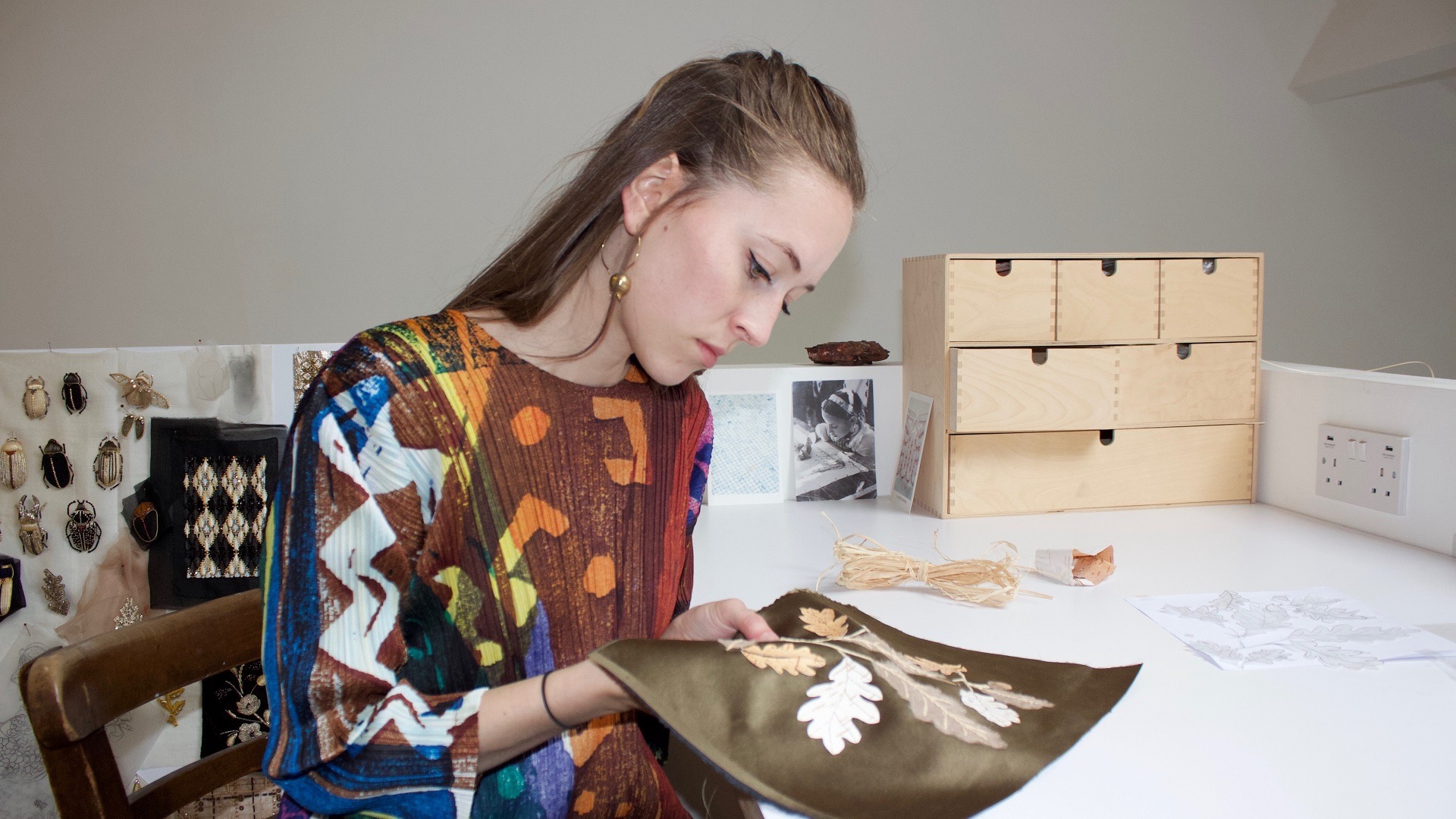
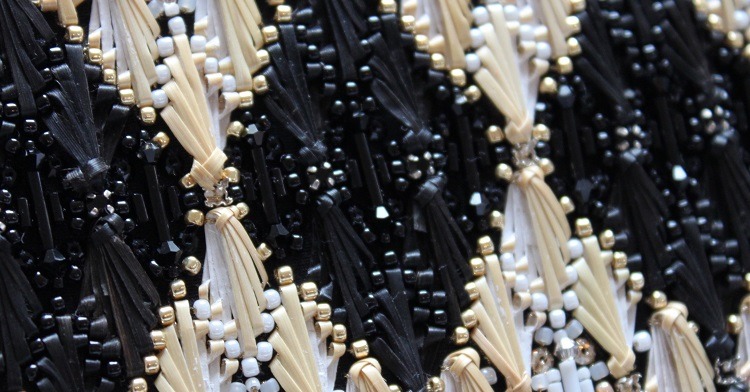

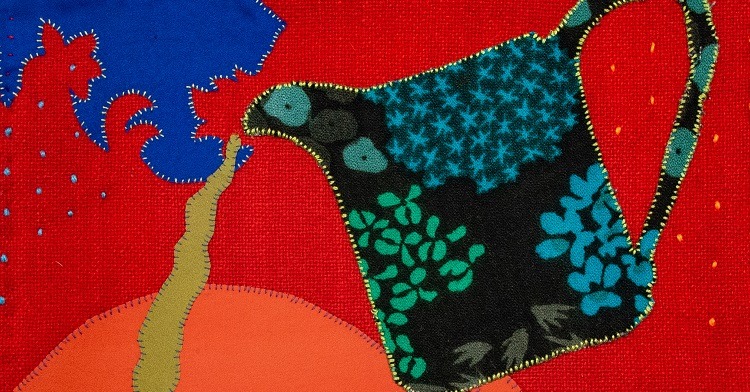
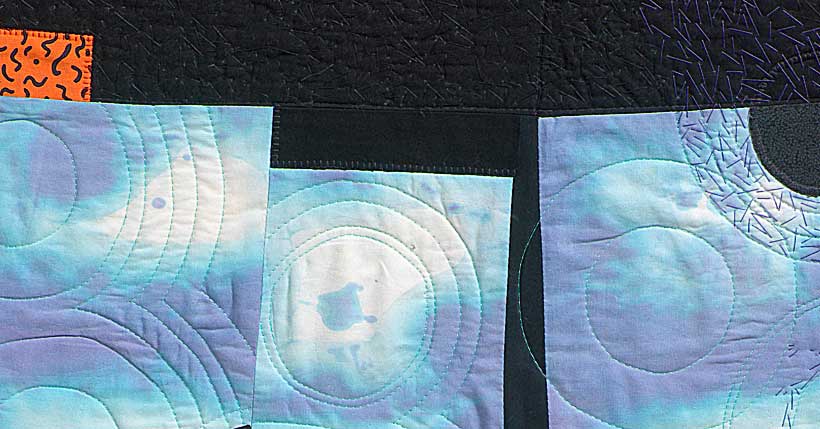
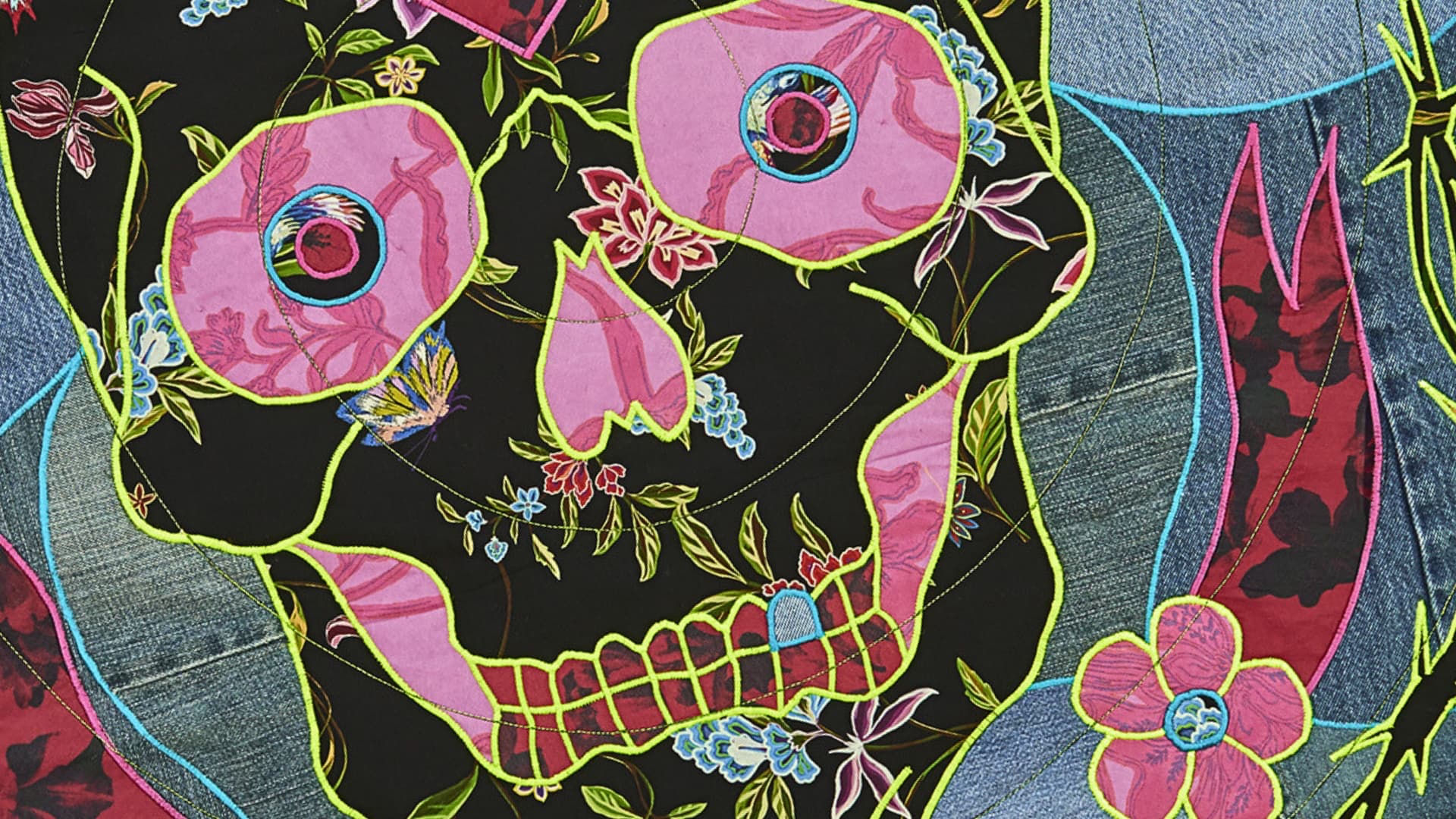
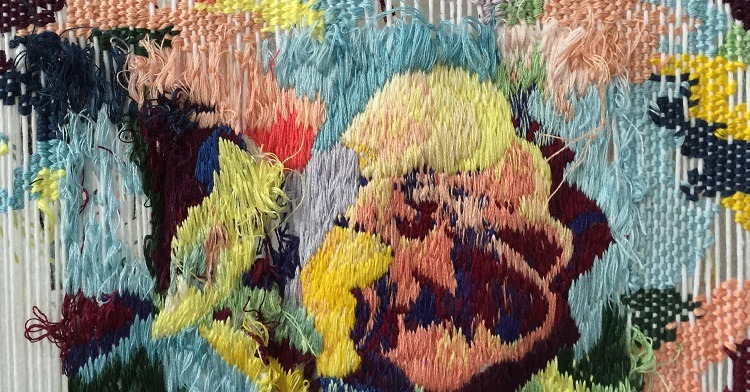
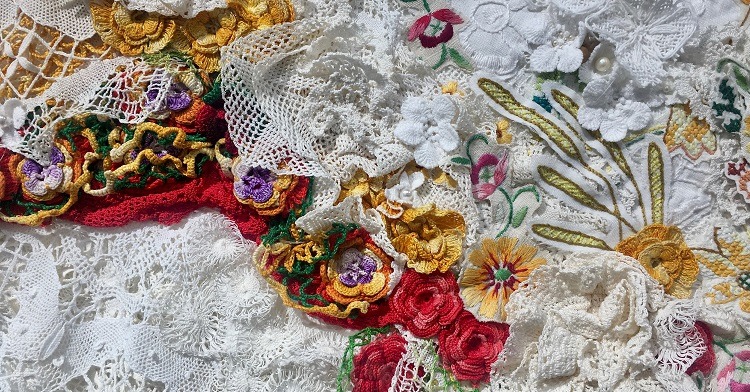
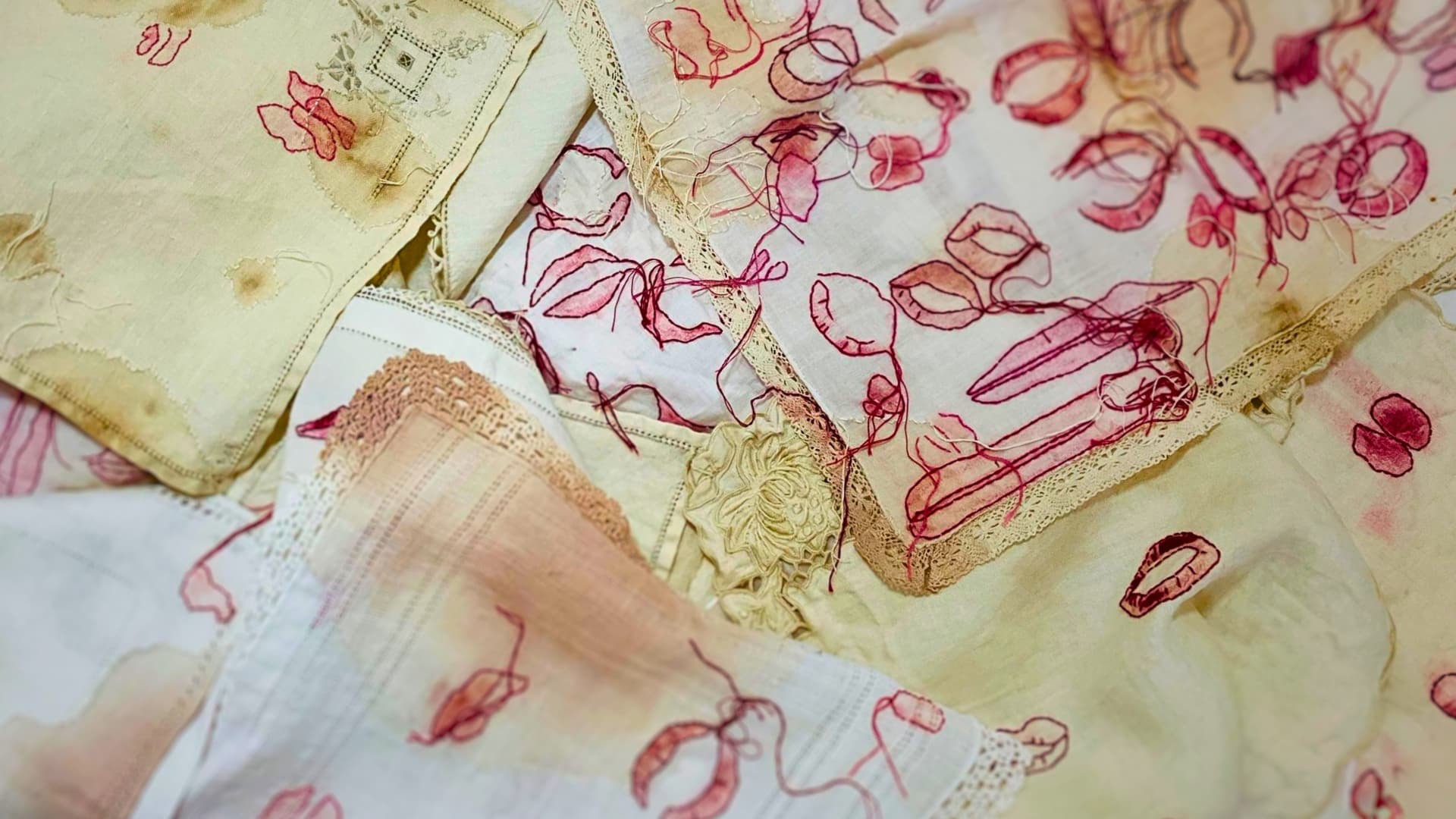
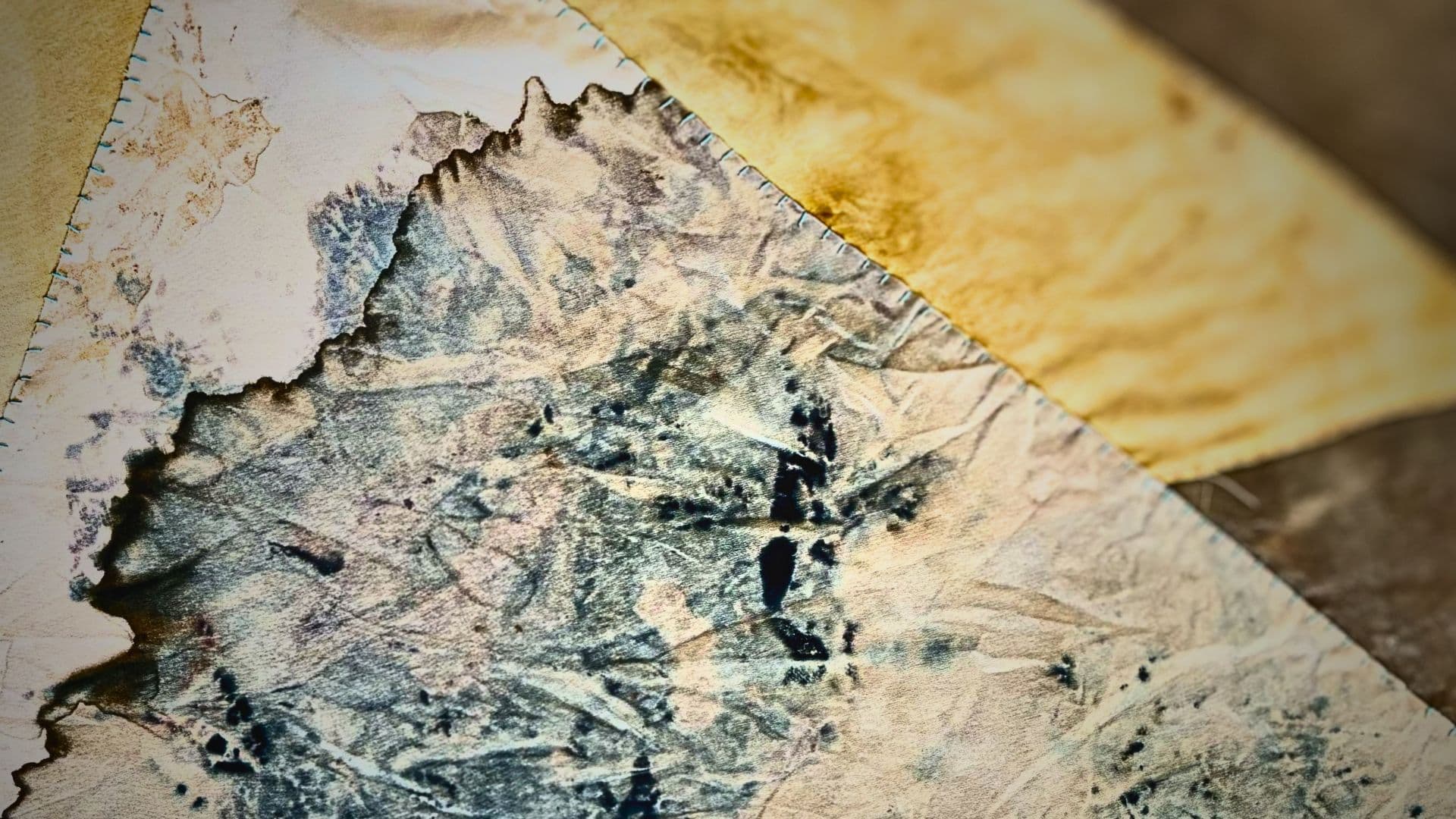
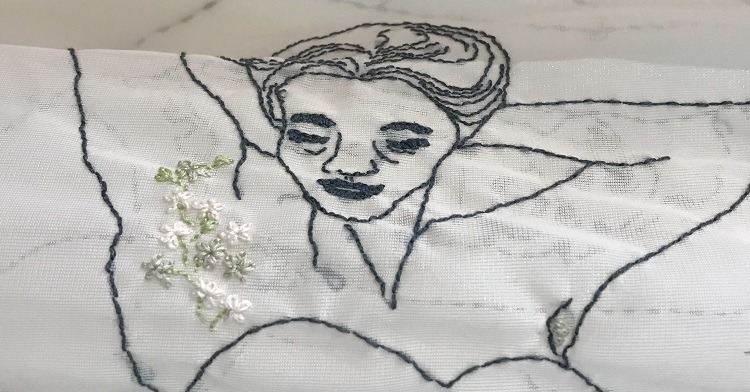
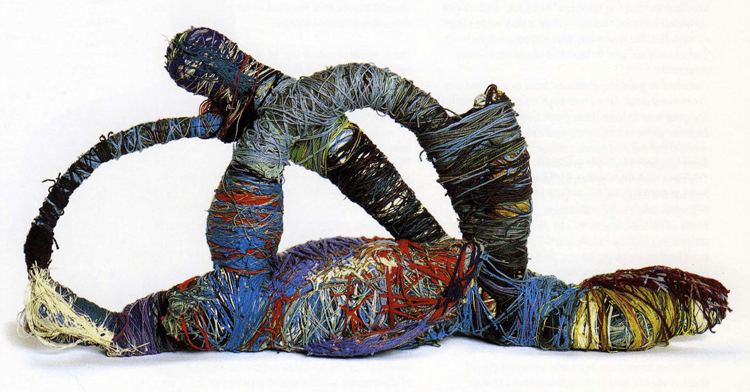
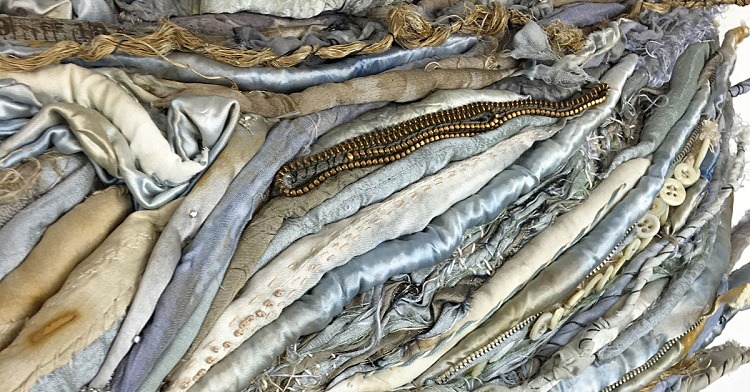
2 comments
June heaton
How do you treat the straw prior to use
Rhonda
I love learning more about the textile artists. I have always loved all kinds of needle work. My granddaughter is 14 years old and loves different fabric and fashioning her own clothes more than most people. I am encouraging her to see that she can make a career of something she loves.